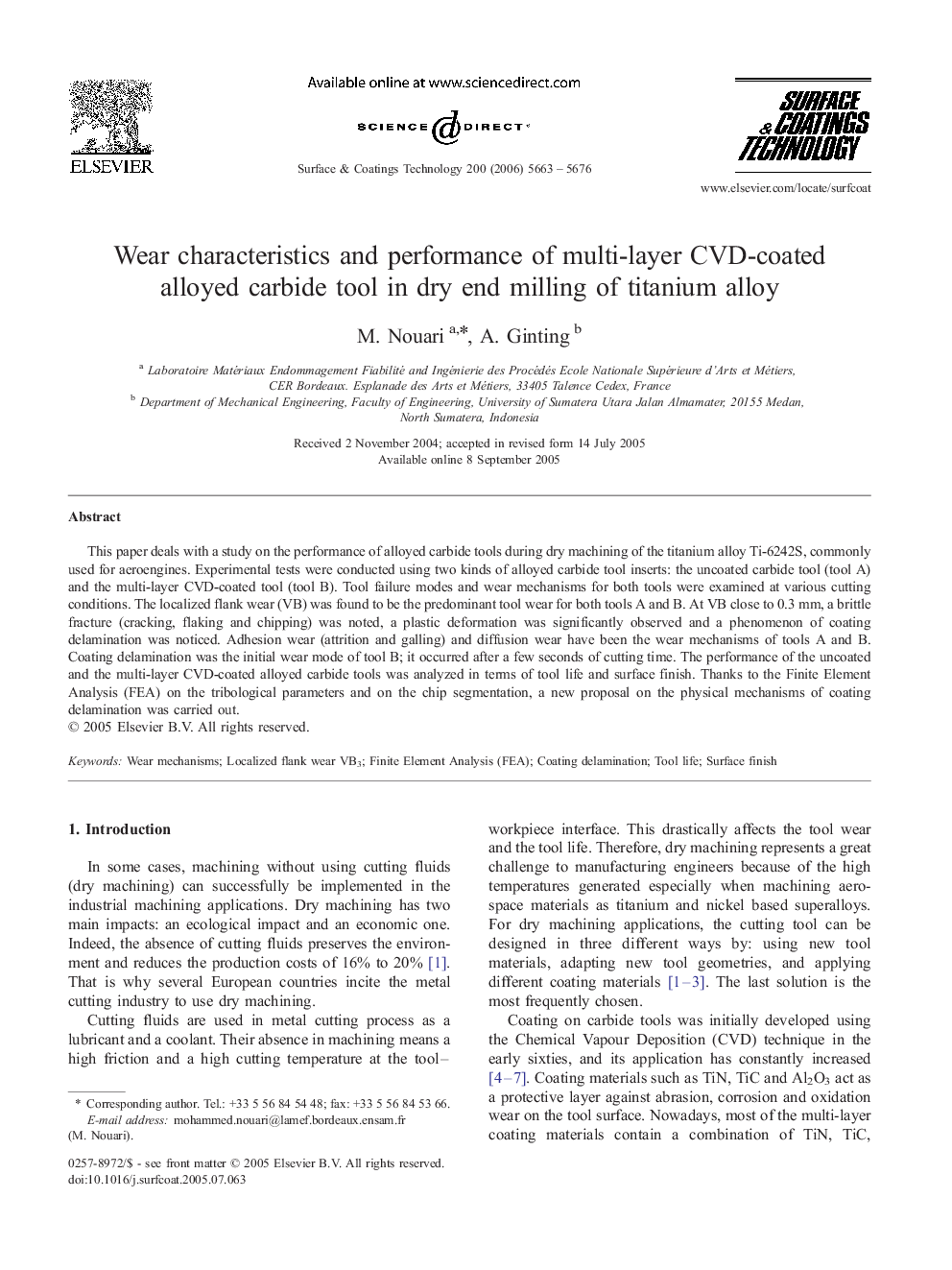| Article ID | Journal | Published Year | Pages | File Type |
|---|---|---|---|---|
| 1662808 | Surface and Coatings Technology | 2006 | 14 Pages |
This paper deals with a study on the performance of alloyed carbide tools during dry machining of the titanium alloy Ti-6242S, commonly used for aeroengines. Experimental tests were conducted using two kinds of alloyed carbide tool inserts: the uncoated carbide tool (tool A) and the multi-layer CVD-coated tool (tool B). Tool failure modes and wear mechanisms for both tools were examined at various cutting conditions. The localized flank wear (VB) was found to be the predominant tool wear for both tools A and B. At VB close to 0.3 mm, a brittle fracture (cracking, flaking and chipping) was noted, a plastic deformation was significantly observed and a phenomenon of coating delamination was noticed. Adhesion wear (attrition and galling) and diffusion wear have been the wear mechanisms of tools A and B. Coating delamination was the initial wear mode of tool B; it occurred after a few seconds of cutting time. The performance of the uncoated and the multi-layer CVD-coated alloyed carbide tools was analyzed in terms of tool life and surface finish. Thanks to the Finite Element Analysis (FEA) on the tribological parameters and on the chip segmentation, a new proposal on the physical mechanisms of coating delamination was carried out.
